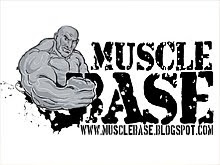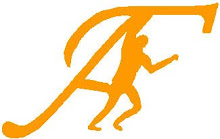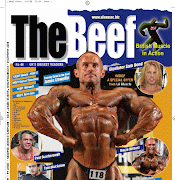
When Joe Weider recited to two-time defending Mr. Olympia Arnold Schwarzenegger the names of the athletes scheduled to challenge him in the 1972 competition, it sounded like a roll call for a bodybuilding hall of fame: Sergio Oliva, Franco Columbu, Frank Zane and Serge Nubret. Arnold knew it would be by far his toughest challenge to date and realized that he would have to take his physique to a new level to remain the king of the hill.
"After talking things over with Joe," Arnold recounts, "I decided that what I needed was a workout program that would allow me to work each muscle group to the limit to force growth and definition to improve simultaneously."
Remembering the tremendous results he experienced from training his chest and back together, and armed with a higher education of Weider principles such as supersets and super flushing, the 25-year-old had an epiphany: He would train his chest and back together as one giant superset!
As Arnold explains it, "There are several advantages to alternating chest and back exercises.
* It saves time and the, workout goes much faster.
* You can handle heavier poundages for more mass power.
* You get a greater pump and a continuous flushing effect of both areas for the entire workout. You keep the pump longer.
* Greater muscle density results because you are able to work to the absolute limit of your physical capacity."
Arnold continues, "One of the most important reasons why a chest-back superset program works so well is the fact that most chest exercises are pushing movements, while all back exercises are pulling exercises. Thc chest muscles are resting during the last exercise and the lats are resting during the chest movement. While each muscle is alternately resting and working, it stay's fully flushed and pumped up.... When the chest and upper back are pumped simultaneously, there is an indescribable feeling of growth stimulation and massiveness."
Here's a synopsis, complete with some of Arnold's thoughts about each of the pec exercises he used in this training regimen and how he employed them.
EXERCISE 1: Barbell Bench Presses
Arnold would first warm up for this favored exercise with 135 pounds for a quick 30-40 reps to get the blood flowing and the joints loose. Then he would immediately head for a chinning bar, knocking out 15 wide-grip behind-the-neck chins before heading back to the bench, adding a pair of 45s to the bar and pumping out 20 more reps.
After a second set of chins, he'd load the bar with 275, perform 15 more reps and then jump back to the chinning bar. And so it went, with weight/rep combinations of 315 for 12, 365 for eight and 405 for six, all superset with chins, all done without rest. Arnold always consciously took very deep breaths while doing this and all of his chest exercises. "In addition to massing up the pectorals, the heavy breathing also encourages rib cage expansion."
EXERCISE 2: Incline Barbell Presses
"This movement is unsurpassed as a builder of the upper pecs." With his pecs now fully warmed up, he would jump right to 225 pounds for an initial 15 reps; again concentrating on deep breathing as well as flexing his pecs throughout the movement. Alternating each set with T-bar rows, he would progress in 20-pound increments as follows: 245 x 12, 265 x 12, 285 x 10 and 305 x 10. By this point, Arnold's pecs and lats would be flushed with blood.
EXERCISE 3: Flat Dumbbell Flyes
"Here is a great exercise to shape up the outer sections of the pectorals and that, when performed correctly, also opens up the rib box and helps to deepen the chest." A master of technique, Arnold perfected this difficult movement as no one else ever had.
He often described the motion of the flye as "hugging a tree." Lying back on a flat bench, with arms slightly bent, he would take a huge breath and slowly lower the dumbbells out and away from his torso, so low that they would practically touch-the floor. Then, with a mighty exhalation, he would raise them back through the same arc, all the time squeezing his pecs.
What set Arnold's technique apart from that of nearly everyone else was his form at the top of the movement. As the tension on his pecs would begin to decrease near the movement's end, he would stop his motion, with the dumbbells remaining 10-12" apart. He realized that anything beyond that was wasted movement having no impact on his pecs. Nevertheless, by employing the Weider Peak Contraction Tr aining Principle, he would forcibly contract this pecs at this point before lowering the weights again. He would start with 65-pound dumbbells for, 15 reps, then jump to 75s for 12, followed by three sets of 10 with 85s. Each set of flyes would be superset with barbell rows.
EXERCISE 4: Parallel Bar Dips
Dips, Arnold felt, carved a clean line at the bottom edge of his pectoralis major like no other exercise. With an 80-pound dumbbell strapped to his waist, he would prop himself up on dipping bars and then slowly lower himself to a point where his hands nearly touched his armpits. Lie then exploded back up, all the time making sure to synchronize his breathing to the pace of the movement--inhale on the way down, exhale on the way up. He'd blast out 15 reps and then perform a set of close-grip chins for each superset. "By the time I get to the fifth set, the pecs and lats are totally engorged with blood and I have such a colossal pump that the muscles feel like they are going to burst through the skin!"
EXERCISE 5: Stiff-Arm Pullovers
With the, chest-back supersets out of the way, Arnold would complete the lifting portion of his workout with pullovers to stretch his pecs, lats and rib cage simultaneously. This exercise was always a staple of Arnold's training and the one he considers most responsible for the overwhelming size of his rib box.
Lying across a flat bench, he would grab a dumbbell of what he considered medium weight with both hands and extend it to arms' length, keeping a slight bend in his elbows. From here, he would lower the weight in an arc down past his head while inhaling very deeply through his mouth, all the while making sure to keep his hips down, thus ensuring the greatest possible stretch. Despite a nearly incapacitating level of fatigue by this point, he would still manage to force out five, sets of 15 to 20 reps with a 90-pound dumbbell.
Between sets, he would pause for about 30 seconds, during which time he would walk around the gym taking deep breaths while forcing his chest to its maximum point of expansion. "Yo u will not believe the ache in the sternum that this movement will produce! It literally pulls your chest apart and forces it into new growth."




















No comments:
Post a Comment